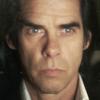Engineer of Ashes
Movie Pick: The Wind Rises

THE WIND RISES (PG-13) Hayao Miyazaki is not just a great director of animated movies. He is a genuinely great filmmaker, and his movies transport us into realms of fantasy, romance and comedy like few others. His latest, a fictionalized account of airplane designer Jiro Horikoshi, the man who built the Mitsubishi “Zero” fighter plane used in battle in World War II, is a hauntingly poignant and beautiful work. It is extraordinary and reportedly Miyazaki's last movie, though perhaps the director will have a change of heart.
Regardless, The Wind Rises makes for a proper emotional finale, encompassing many of the themes that have obsessed Miyazaki over the course of his magnificent career. Jiro, a young aeronautical engineer, dreams of designing an airplane of incomparable beauty and usefulness. His first job for the Mitsubishi company constructing such a plane, however, is not a craft for peacetime, but for war. Japan's government is gearing up for battle and wants the sleekest, deadliest aircraft they can build. Although Jiro is a thoughtful man, literally guided by his dreams to envision the reality of building the perfect plane, he is also ambivalent in his role as an architect of war. Jiro journeys to Germany to study their fighter planes, and he grows increasingly more frustrated by his country's lack of technical sophistication in comparison to Germany and the United States. But Jiro's dream of creating a plane of beauty and efficiency does materialize, and the result is ultimately nightmarish and tragic on a scale previously unimagined. Meanwhile, Jiro falls in love with the lovely yet ill Naoko, whom he met years ago in the horrific aftermath of the 1923 earthquake. Naoko is dying of tuberculosis when he reunites with her, yet the two marry and attempt to find some semblance of happiness in their lives. World War II then erupts and... engulfs all.
On a visual level, The Wind Rises is a remarkable feat. Miyazaki is a master craftsman, visually focusing on appropriate details—the manner in which wind can bring great violence (the shockwaves of the earthquake) or amorous possibilities (the moment when Jiro and Naoko reunite in the grass)—and he edits his sequences and frames his animated shots with his usual perception and grace. The destructive force that Jiro unleashes with the Zero is explicitly shown, albeit briefly, in the end, though Miyazaki foreshadows it throughout the movie. A mix of understated poetry and mesmerizing visual accomplishment, The Wind Rises shows how dreams can easily transform into nightmares and then to ashes.
Keywords
More by Derek Hill
-

Birdman or (The Unexpected Virtue of Ignorance)
Movie Review
-

20,000 Days on Earth
Movie Review
-

St. Vincent
Movie Review









comments